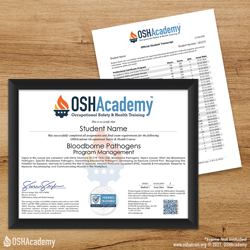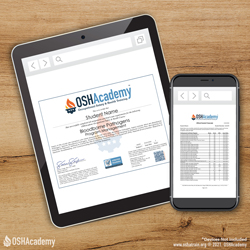Introduction
Bloodborne Pathogens Program Management is designed to provide students with the essential knowledge necessary to help reduce or eliminate the occupational risk of bloodborne pathogens and develop a comprehensive Exposure Control Plan (ECP). This training program teaches the information every safety leader needs to know in order to help avoid an accidental exposure to potentially infectious materials and how to manage an accidental exposure if one occurs.
Course Objectives
| ID | Objective |
|---|---|
| TO 1.0 | Achieve a minimum score of 70% on the final course assessment. |
| LO 1.1.1 | Define "bloodborne pathogens" and describe the primary types of viruses addressed by the bloodborne pathogens standard. |
| LO 1.2.1 | Describe the Hepatitis B (HBV), Hepatitis C (HCV), and Human Immunodeficiency virus (HIV), and symptoms of their infection. |
| LO 1.3.1 | Explain how bloodborne pathogens are, and are not, transmitted. |
| LO 1.4.1 | Describe the primary components of the employer's Exposure Control Plan (ECP). |
| LO 1.5.1 | Identify the types of jobs that are at high risk of exposure to bloodborne pathogens. |
| LO 1.6.1 | Describe methods to control the risk of exposure to bloodborne pathogens. |
| LO 1.7.1 | Identify the types of personal protective equipment needed to protect against bloodborne pathogens. |
| LO 1.8.1 | Discuss the guidelines and employee rights regarding HBV immunization. |
| LO 1.9.1 | Describe procedures for responding to bloodborne pathogens exposure incidents. |
| LO 1.10.1 | Discuss housekeeping guidelines for reducing exposure and post-exposure cleanup and disposal of hazardous waste. |
| LO 1.11.1 | Describe requirements and methods for communicating the hazards of chemicals. |
Key: Terminal Objective (TO), Learning Objective (LO)



